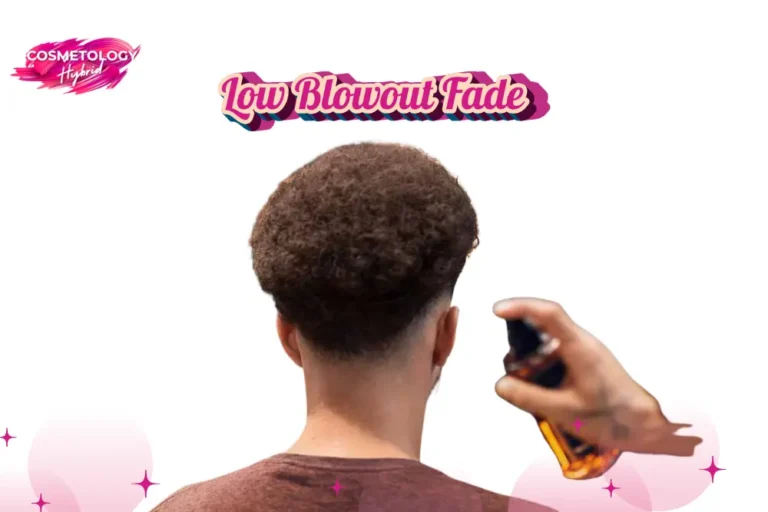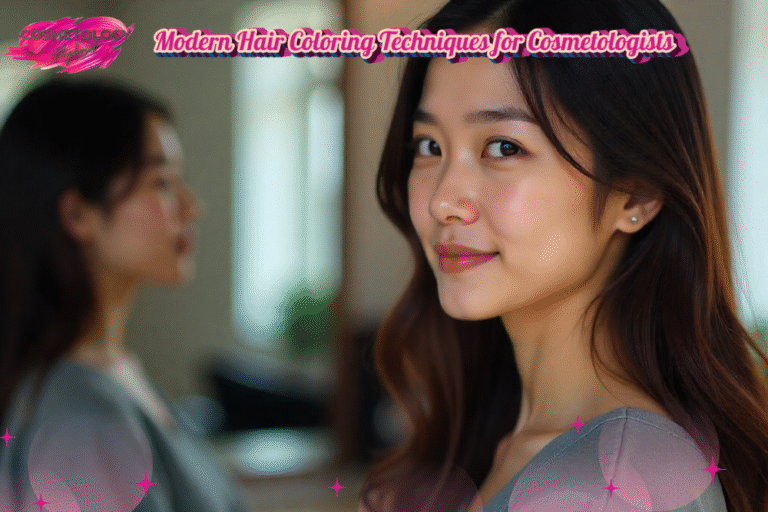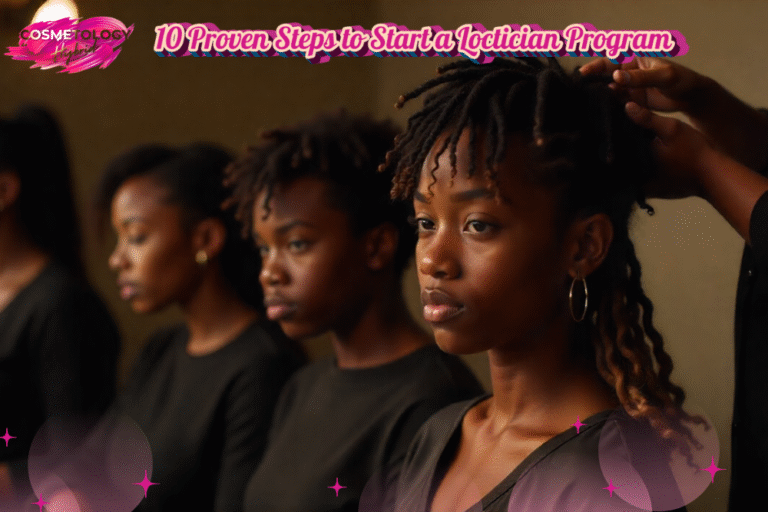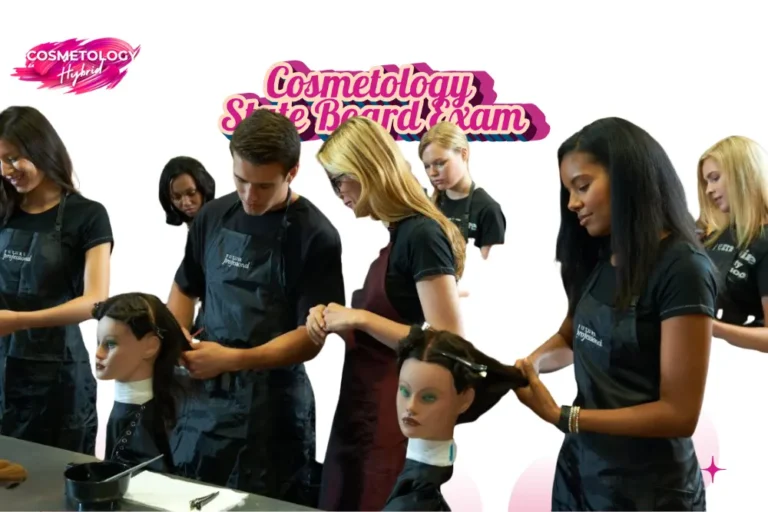The blowout fade haircut mixes clean sides with a lifted, textured top. It gives a fresh, bold look that stays wearable. You get contrast and volume, both in one cut. Barbers rely on barber clippers and guards, then finish with blow dryer volume styling to shape the top. This style sits with modern men’s hairstyles 2025, and it rewards simple care and smart trims. Match it to your face and hair, then commit to regular upkeep for the best results.
What Is a Blowout Fade, and Why It Works
The blowout fade pairs a faded sides with an airy top that reads fuller. It relies on precise fade blending techniques and targeted drying to keep volume where you want it. The result looks intentional and clean, yet it keeps movement and texture.
What this really means is you get a versatile cut. Wear it to work, to a party, or out with friends. The contrast draws attention, while the volume keeps the style modern and photo-ready.
Origin and rise in barber culture
The cut rose in urban barbershops, driven by street style and athletes. Barbers experimented with longer tops and cleaner sides, then added blow-dry volume for lift. Influencers and musicians amplified the look on social platforms.
The movement made the style mainstream. Barbers now teach this technique in workshops. It sits among other fade haircut variations, and it evolved into many creative takes.
Key features that define the blowout fade
Sharp, clean sides meet a fuller top that is blown out for volume. The blend must be seamless, with no hard lines. Styling holds the lift without making the hair stiff.
You should see height, texture, and a soft silhouette at the crown. That is what separates the cut from a simple taper or traditional fade.
You may also enjoy learning about shaggy pixie cut styles, another chic option.
Blowout Fade Types, Pick the Right One
Choose a fade height to match your face and lifestyle. High fades read bold. Low fades feel conservative. The mid option gives balance. Each choice changes the haircut’s personality.
Your barber will adapt guard progression and blending to your scalp shape. That small tweak alters how the hairstyle frames your face. Think beyond names, think about the final silhouette.
High blowout fade, low blowout fade, mid fade explained
A high blowout fade haircut starts near the temples. It creates strong contrast and a dramatic profile. This suits bold looks and short sides that show off the top.
A low blowout fade haircut starts near the ears. It gives a gentle transition and suits conservative workplaces. The mid fade sits between these, offering the most flexibility for daily wear.
Skin fade versus tapered finish, which to choose
A skin fade removes hair down to the skin for a crisp edge. It amplifies contrast and highlights the styled top. A tapered finish leaves a softer, natural graduation.
Pick a skin fade if you want drama. Pick a tapered finish if you want subtlety and a more classic silhouette.
Who Should Get a Blowout Fade, Face Shapes and Hair Types
This cut adapts well, but you must match volume and fade height to your face. Round faces benefit from added top height. Square faces do well with softer side blending.
If your hair is thin, plan product and styling to add lift. If your hair is dense, your barber must control bulk to avoid a heavy top.
Best fits for round, square, oval, and long faces
Round faces look longer with a higher, voluminous top. Square faces soften with a gradual fade and texture on top. Oval faces carry most versions well. Long faces usually need lower fades to avoid elongation.
Pick the fade height to balance proportions. The right choice makes the haircut feel custom.
Hair texture guide, fine, thick, curly, straight
Curly hair gives natural lift, ideal for a blowout fade curly hair look. Fine hair will need product for body, such as light mousse or volume paste. Thick hair needs controlled layering to prevent a bulky top. Straight hair benefits from brush lift and texture paste to keep movement.
Knowing your texture guides product choice, blow-dry method, and the barber’s fading technique.
Step-by-Step Hybrid Cosmetology Barber Guide to Cutting a Blowout Fade
Barbers program at Hybrid Cosmetology School, follow a consistent workflow, from consultation to finish. The consultation sets expectations, the clipper work defines the fade, then the dryer sculpts the top. Each step informs the next.
Precision matters in guard progression and blending. The barber should test angles and adjust as they go. The goal is a smooth transition and a top that holds shape under styling.
At Hybrid Cosmetology School, our Barbering Program trains students in the art and precision of modern fades, including the popular blowout fade. Every haircut follows a structured process that mirrors what barbers use in top shops today.
Tools and setup every barber needs
A quality clipper set, multiple guards, sharp scissors, combs, a blow dryer with a nozzle, and round or vent brushes form the core kit. Sanitization and good lighting are non-negotiable.
Barbers also rely on barber shop consultation tips to capture client preferences before any cutting begins. Photos and clear guard numbers prevent miscommunication.
Clipper technique, blending, and guard progression
Start low, work up, and close gaps by switching to intermediate guards. Use flicking motions where hair meets the top to avoid hard lines. Check in with the client while you go.
Mastery of fade blending techniques reduces patchiness and creates a soft gradient. A comb-over blend and scissor-over-comb finish often help around the crown.
Blow-drying and finishing techniques for lasting volume
Use a nozzle, lift the hair at the roots with a round brush, and dry on medium heat to set volume. Apply a light heat protectant first, then a volumizing product while damp.
Finish with pomade, matte paste, styling cream, or a light hairspray. The product choice controls shine and hold, so pick based on desired texture.
How to Do a Blowout Fade at Home, Simple Method
DIY works if you keep expectations realistic. Start with longer guards. Work in small sections. If you feel unsure, stop and refine later. The goal is tidy sides, not perfection.
Practice symmetry by trimming both sides equally. Focus on blending the lower sections first. Use the dryer and product to shape the top and hide minor unevenness.
Beginner-friendly steps and realistic expectations
Wash and lightly towel-dry the hair. Clip the sides with a long guard, then shorten gradually. Use mirrors to check angles. Finish by blow drying the top and applying a small amount of product.
Expect learning curves. Your at-home cut will improve with each try, but complex fades still benefit from a pro barber’s eye.
Common mistakes to avoid, and quick fixes
Avoid cutting too short too fast, and never remove too much from the top. If a line appears, re-blend with a longer guard. Use product to mask uneven texture temporarily.
If you clip the neckline unevenly, fix it with a trimmer and guide comb. Small fixes go a long way toward a cleaner look.
Styling Products and Daily Routine for Volume and Hold
Products make the cut perform. A light base product supports lift, while a texturizer provides separation. Heavy waxes will squash your volume. Match product density to hair thickness.
Daily routine includes proper drying, minimal product, and occasional touch-ups. Overwashing strips oils, while under-washing builds residue. Find a rhythm that keeps hair healthy and responsive.
Product breakdown, pomade, cream, matte paste, heat protectant
Pomade gives sheen and some hold, while matte paste adds texture without shine. Creams smooth and help manage frizz, especially in humid weather. Always use a heat protectant before blow drying to prevent damage.
For best products for blowout fade, choose lightweight formulas that add body and allow movement. Test small amounts to avoid heaviness.
Daily blow dry routine and brush choices
Start with towel-dry, apply a heat protectant, then lift hair with a round brush while blow drying. A vent brush moves air faster and reduces over-drying. Dry in sections for consistent lift.
Finish by working a small amount of pomade, matte paste, styling cream into the top for hold and shape. That preserves the blowout without stiffness.
Maintenance, How Often to Trim, and Longevity Tips
Fades soften quickly as hair grows. Most people need a trim every two to three weeks to stay sharp. Timely trims keep the silhouette tight and the top in proportion.
Between visits, use styling to hide growth and neck trims to freshen the outline. A little maintenance extends the life of the cut significantly.
Growth timeline, when the fade starts to lose shape
Hair grows about half an inch per month. For most clients the fade loses crispness after two to three weeks. The crown can flatten sooner if you have fine hair.
Watch the hairline and temple area. When lines blur, book a touch-up to restore the clean contrast.
Quick touch-up hacks between barber visits
Use clippers to tidy the neckline and sideburns. A quick round with a longer guard can neaten the sides. Refresh volume with a warm blow dry and a little dry shampoo to add grip.
Product layering and a light hairspray help keep shape for extra days before the next cut.
Cost, Booking, and What to Ask Your Barber
Price varies by city and experience. Expect more in larger metro areas. Don’t sacrifice clarity for price. A clear brief saves time and gives better results.
Bring photos, describe guard numbers, and explain how much volume you want. Ask about maintenance and product recommendations to match your routine.
Typical price range and factors that affect cost
Prices range widely. A standard men’s haircut price range in many cities sits between twenty five and sixty dollars, while specialty shops can charge more. Experience, location, and added services push the cost up.
Consider the barber’s portfolio, shop cleanliness, and client reviews before booking. These factors predict quality better than price alone.
How to bring references, communicate length and shape clearly
Bring three photos, front and side views, and a back shot if possible. Mention exact guard numbers or show a recent picture of a style you liked. Say how much daily time you plan to spend styling.
Clear barber shop consultation tips remove guesswork and get you the result you expect.
Troubleshooting Common Issues
If the top falls flat or the fade shows lines, simple fixes often solve it. Product choice and drying technique usually make the biggest difference. When in doubt, ask your barber for a quick correction.
A well-chosen routine and the right products keep your haircut performing through weather changes and busy weeks.
Fixing uneven fades, dealing with cowlicks and thin spots
Uneven fades need correction from the barber, often by re-blending with a slightly longer guard. For cowlicks, ask the barber to adjust the direction of the cut and use product that adds hold at the roots.
Thin spots can be camouflaged with texture and strategic styling. Texturizing scissors can remove bulk and disguise sparse areas.
Managing frizz, humidity, and loss of volume
Use anti-frizz serums on damp hair and a humidity-resistant paste in humid months. For lost volume, apply a root lifter or a light powder for grip, then re-blow dry briefly at the roots.
Seasonal tweaks to products and heat settings keep the look stable year-round.
Final Notes
If you want a bold, modern look that stays flexible, the blowout fade is a great choice. It asks for minimal daily effort if you follow a simple routine. Match the fade height to your face, pick lightweight products, and trim regularly.
Trust a skilled barber for the first few cuts. That sets the foundation for great at-home styling and long-term satisfaction.
FAQs
Question 1, Is a blowout fade good for curly hair?
Yes, blowout fade curly hair often looks full and textured, because curls add natural lift and shape, which enhances the top volume and contrast.
Question 2, How often should I trim to keep a blowout fade looking sharp?
Plan trims every two to three weeks, depending on growth rate. Frequent neckline and temple touch-ups stretch the time between full cuts.
Question 3, What is the difference between a blowout fade and a taper fade?
A blowout fade emphasizes an airy, lifted top with a clearer contrast on the sides. A taper fade offers a softer, more gradual reduction that keeps the overall silhouette less dramatic.
Question 4, What products work best for volume and hold?
Use a lightweight volumizer first, then a small amount of matte paste or pomade depending on desired shine. Finish with a light hairspray if you want longer hold.
Question 5, Can I do a blowout fade at home?
You can, but start conservative with longer guards and practice blending. For best results, see a barber for the first few cuts and learn the basics.







